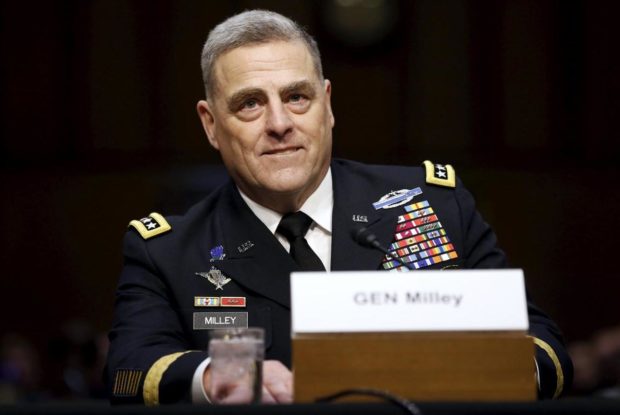General Milley Affirms That Inclusive Policy for Transgender Troops Did Not Harm Readiness
As part of his Senate confirmation process for the position of Chair of the Joint Chiefs of Staff, General Mark Milley recently provided written answers to Senators’ Advance Policy Questions in addition to his live testimony before the Senate Armed Services Committee. Below, the Palm Center comments on General Milley’s responses that address military service by transgender personnel (APQ pages 106-07; live testimony at 44:30).
- In the APQ, General Milley reaffirms his prior assessment: “I am not aware of significant impacts to unit readiness based on transgender persons serving in the Army.” It’s been more than three years—any impact would be apparent by now.
- In the APQ, General Milley acknowledges that “any reduction in fully deployable service members that meet all medical standards would presumably have a detrimental effect on readiness.” This is very helpful. Current policy requires separation of anyone with a medical need to transition gender, even if they would meet the same deployment and medical standards that apply to everyone else. In these first two points, General Milley has built a bridge that DOD could walk back across under a new administration, or after a favorable court ruling.
- The Department does know how many transgender persons are in service, contrary to General Milley’s APQ answer, because it asked them in a survey. DOD’s own data show that 8,980 active-duty members identified as transgender, which extrapolates to approximately 14,700 members in the active, guard, and reserve components. DOD does not know who they are, because only about 10% have come forward to be grandfathered under prior policy. But the ban impacts the remaining 90%, and all future service members, because it forces them to remain silent to avoid risk of discharge.
- In his live testimony (at 44:30) before the Senate Armed Services Committee, General Milley emphasized the importance of military standards. As a general principle, that is certainly correct and serves as a path back to policy that permits all qualified persons to serve. But it is important to remember that current policy establishes a “standard” that all persons, transgender or not, must serve in birth sex. The standard is written to target transgender service members and applicants, and therefore is not a normal military “standard” that affects all equally.
- Current policy is a reboot of “don’t ask, don’t tell,” as former Chair Mike Mullen has explained. The transgender ban is based on an interpretation of gender identity that says, in essence, troops can theoretically be transgender, provided they don’t have gender dysphoria, don’t need treatment for gender dysphoria, and don’t need to undergo gender transition. “Don’t ask, don’t tell” was similarly based on an argument that sexual orientation was not a bar to service, provided that the service member never talked about it and never had relationships with people of the same sex. Both arguments are not-very-veiled attempts to target a population for discrimination, using proxies for identifying the population.
Bottom line: General Milley’s testimony and written responses potentially left a path to ending the ban, but unfortunately they also obscured the present discriminatory impact of the ban with misleading references to “standards” that, by definition, transgender persons are prevented from meeting.
